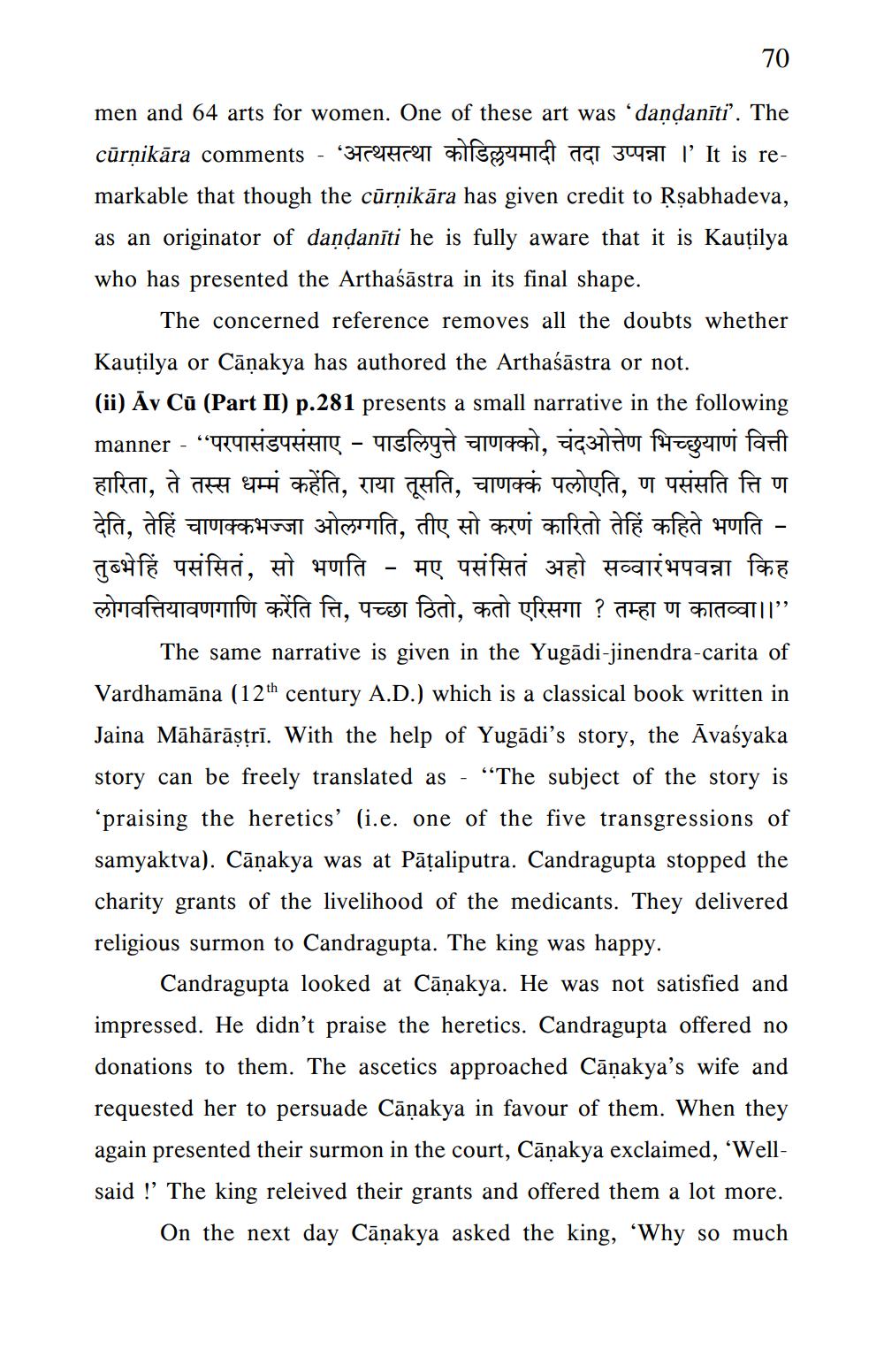________________
70
men and 64 arts for women. One of these art was ‘dandanīti'. The cārnikāra comments - ‘अत्थसत्था कोडिल्लयमादी तदा उप्पन्ना ।' It is remarkable that though the cūrņikāra has given credit to Rşabhadeva, as an originator of dandanīti he is fully aware that it is Kauțilya who has presented the Arthaśāstra in its final shape.
The concerned reference removes all the doubts whether Kautilya or Cāņakya has authored the Arthaśāstra or not. (ii) Āv Cū (Part II) p.281 presents a small narrative in the following manner - “परपासंडपसंसाए - पाडलिपुत्ते चाणक्को, चंदओत्तेण भिच्छुयाणं वित्ती हारिता, ते तस्स धम्मं कहेंति, राया तूसति, चाणक्कं पलोएति, ण पसंसति त्ति ण देति, तेहिं चाणक्कभज्जा ओलग्गति, तीए सो करणं कारितो तेहिं कहिते भणति - तुब्भेहिं पसंसितं, सो भणति - मए पसंसितं अहो सव्वारंभपवन्ना किह लोगवत्तियावणगाणि करेंति त्ति, पच्छा ठितो, कतो एरिसगा ? तम्हा ण कातव्वा।।"
The same narrative is given in the Yugādi-jinendra-carita of Vardhamāna (12th century A.D.) which is a classical book written in Jaina Māhārāstrī. With the help of Yugādi's story, the Avaśyaka story can be freely translated as - "The subject of the story is ‘praising the heretics' (i.e. one of the five transgressions of samyaktva). Cāņakya was at Pāțaliputra. Candragupta stopped the charity grants of the livelihood of the medicants. They delivered religious surmon to Candragupta. The king was happy.
Candragupta looked at Cāņakya. He was not satisfied and impressed. He didn't praise the heretics. Candragupta offered no donations to them. The ascetics approached Cāņakya's wife and requested her to persuade Cāņakya in favour of them. When they again presented their surmon in the court, Cāņakya exclaimed, 'Wellsaid !' The king releived their grants and offered them a lot more.
On the next day Cāņakya asked the king, “Why so much




